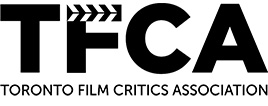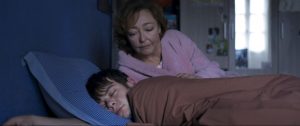An interview with Paying for It writer/director Sook-Yin Lee on adapting Chester Brown’s graphic novel and bringing their relationship to the screen.
“You never know how the world will respond”: Matthew Rankin and Universal Language
February 15, 2025
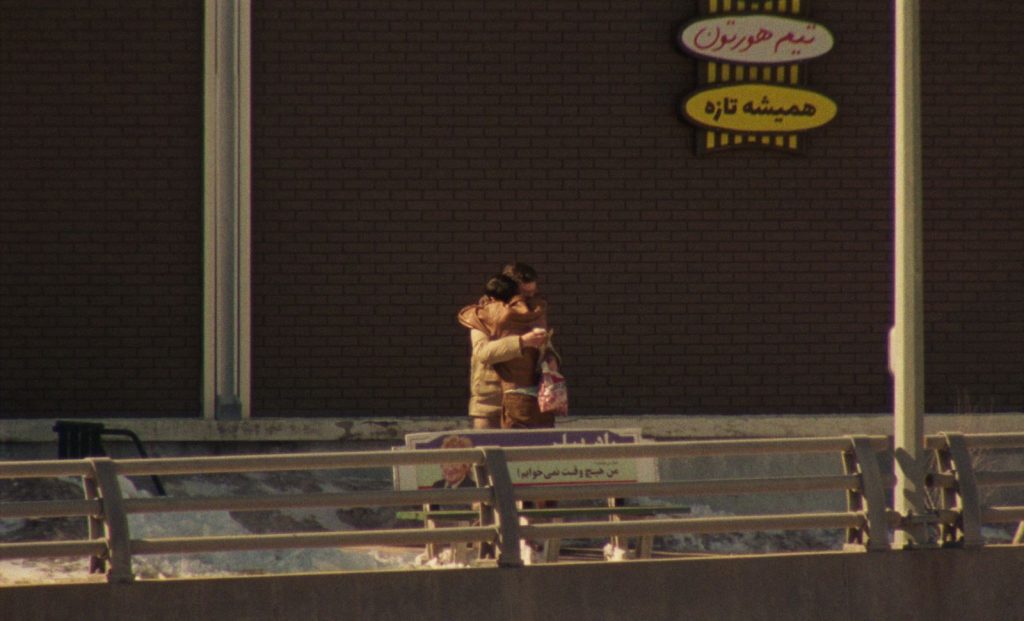
By Norm Wilner
Matthew Rankin has been having a very good year.
The Winnipeg experimental filmmaker’s second feature, Universal Language – a deadpan comedy set in a wintry Canada where Farsi and French are the official languages, and loneliness is the common currency – premiered to a rapturous reception at Cannes last May, kicking off an acclaimed tour of the world’s film festivals, winning a dozen prizes – including the Canadian Discovery Award at TIFF, where I programmed the film – and a spot as Canada’s official submission to the Academy Awards in the Best International Feature category. And, of course, it’s also a finalist for the TFCA’s own Rogers Best Canadian Film award, alongside Rumours and Shepherds, which carries a cash prize of $50,000, courtesy of Rogers.
In advance of the TFCA awards gala later this month, Rankin found time in the middle of a cross-country release tour to talk about making the film and its reception around the world. We started by talking about how different the film is from his first feature, The Twentieth Century (2019), which reimagined the life and career of Canada’s 10th Prime Minister, William Lyon Mackenzie King, as a vivid psychosexual comedy.
At what point did you realize how different Universal Language was going to be from your other work, both texturally and tonally? Even shooting it on location rather than on soundstages changes so much about the aesthetic.
I’m a filmmaker with an extra-large cinematic appetite: I’ve worked in documentary, animation, non-narrative experimental, and, more recently, fiction, and I just love cinematic language in all its forms. I think it’s important to resist the inertia of “safe ideas” and take the risk of making new images. So, with each project I always like to shake up the form.
When I finished Twentieth Century, I was badly in debt. Purely out of starvation, I took a one-year position with the Canadian government, making propaganda films for the National Parks. [Universal Language co-writer/actor/executive producer] Pirouz Nemati and I made a couple of psychedelic shorts in Kootenay National Park and I got so excited about the cinematic power of weather and the sun and the joy of finding frames that are just out there in the world (rather than pre-conceiving every image for studio builds). So, after several studio-based shoots, I wanted to go outside for the next thing.
Universal Language is different in form and rhythm, but it also has a lot in common with Twentieth Century: The humour, the mannered tone, the brutalist angles. Both films get into mischief with cinematic artifice and its infinitely fraudulent relationship with “reality” and both share some major thematic preoccupations. As you are, so will your art be, and I am a very worried person. I worry a lot about how mean the world is becoming and how we should probably go a little easier on each other.
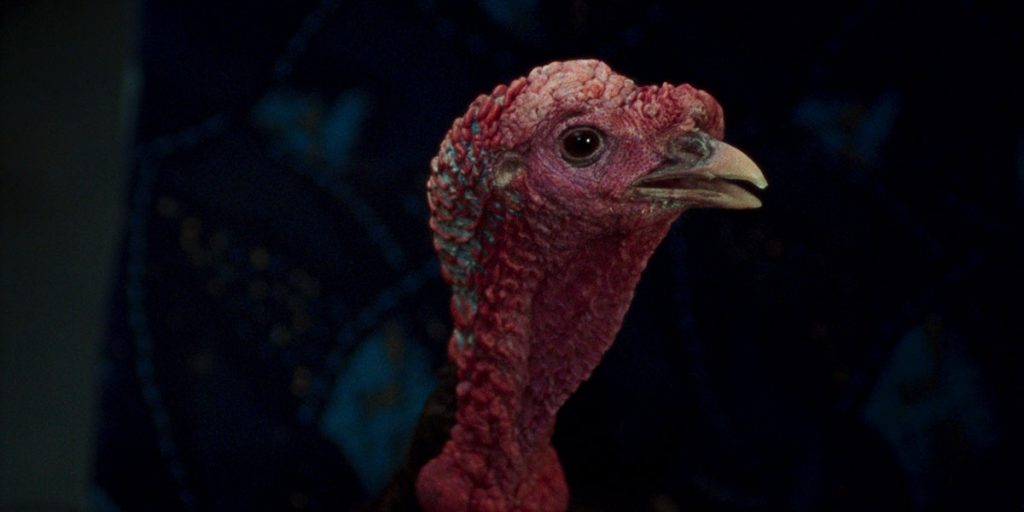
Universal Language is a love song to Iranian cinema in general and to Abbas Kiarostami in particular, transplanting his deeply compassionate perspective to wintry Manitoba and glum Quebec. What I loved the most about that is the depth of your homage; you’re not just borrowing an image here or a composition there, but reviving his spirit in a manner both thoughtful and quietly clever. It’s like the movie is a sort of shrine, and everyone inside it is worshipping the same icons.
I think of our movie as the child of a very improbable orgy. I love Kiarostami, of course, but many entangled lovers produced this beast. It’s an extremely hybrid movie, broadly interconnecting three great cinematic spheres: Iranian poetic realism, Winnipeg surrealism, and Québécois melancholy. The idea is to create a completely new space at the confluence of all three.
Each plot in the film carries one of the three spheres. The story of the two sisters directly invokes the formal codes and tropes of what we might term the “Kanoon school” of poetic realist films about the lives of children in Iran – Kiarostami, the Makhmalbaf family, Panahi, Sohrab Shahid Saless, among others. The story of the tour guide, Massoud, carries the “Prairie postmodern” sphere – Guy Maddin is, of course, one of my cinematic parents, but I think our movie owes a bigger debt to the muted absurdism of John Paizs (Springtime in Greenland, Crime Wave), the winter nights of Roman Kroitor (Paul Tomkowicz: Street Railway Switchman), and especially the warm-hearted deadpan of Winnipeg street photographer and filmmaker John Paskievtch (Ted Bary Luk’s Grocery). The third sphere is carried by my own character’s plot, drawing inspiration from what I like to call Realism suicidaire québécois – a strain of inconsolably mournful filmmaking in Québec that typically follows a preternaturally lonesome protagonist on a self-destructive death-march into nothingness. (Here I’m thinking in particular of Simon Lavoie, Mathieu Denis, and Maxime Giroux, among others.)
So, these are the intermingling parents of our baby! Each sphere is remixed, repurposed, reimagined and brought into an unlikely synthesis. And that synthesis is made out of feelings and emotions and, critically, humour.
As reference films, I screened Playtime (1967) by Jacques Tati and Point and Line to Plane (2020) by Sofia Bohdanowicz, both of which I think about all the time. [Co-writer] Ila [Firouzabadi] and I also rewatched Trevor Anderson’s short masterwork The Little Deputy (2015), which is really quite different from our movie, but Trevor is Canada’s unrivalled master of autofiction and I count him as an influence and really look up to him. Of course, I showed Duck Soup (1933) to the young actor Parsa Ghahfarokhi so he could correctly imitate Groucho Marx. I also showed more than a few people the very soulful and quiet scene in A Night at the Opera (1935) in which Harpo plays his harp. I really like it when a movie invites you to stop for a moment and listen and the moment where Harpo briefly abandons all lunacy and dives deep into his harp has always fascinated me. It was a useful way to explain the dream-like ice skating sequence in our script, where our movie invites to you to stop and listen for a moment in a similar way. Beyond that, director of photography Isabelle Stachtchenko and I also watched and re-watched the (many!) driving scenes in Kiarostami’s The Wind Will Carry Us ( 1999). That was about it.
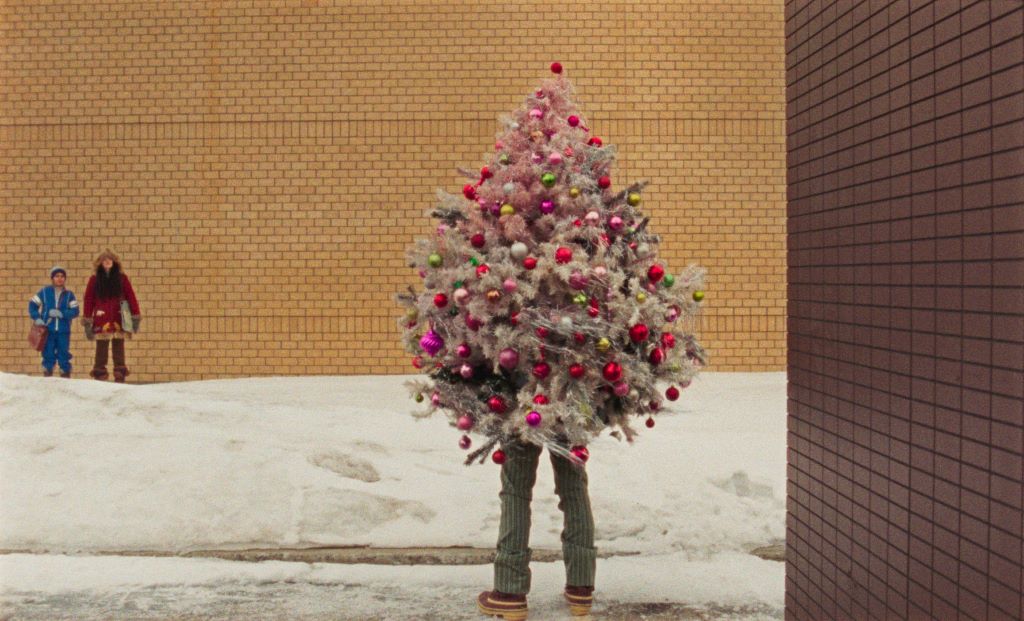
I’ve always loved to draw, and I did hundreds of conceptual drawings and a very elaborate storyboard, which is a useful tuning fork for both the crew and the cast. But the very peculiar tone of the movie, more than anything else, really comes from Pirouz and Ila and myself and how we are together. We are really that silly and we surrounded ourselves with collaborators who could really get into that frequency with us.
Getting everybody on the same page – and this is true of any film – is about putting together a gang of people who have a personal relationship with the movie we are making together. Making a film can never be transactional. A film comes to live when it is really the personal expression of everybody who makes it. So the goal is to build a collective brain which is bigger than each of us individually. When you calibrate all the synapses really well, that brain becomes really intelligent and it thinks. The director is there as a point of synthesis, yes, but the brain is what makes the film. We are all there to serve the brain!
I always say that Iranian cinema emerges out of a thousand years of poetry and Winnipeg cinema emerges out of forty years of discount furniture commercials. There is something absurd about putting those together and yet, that is our world. Every single one of us is alive, right now, at the same time because of every single one of our mothers since the beginning of time. Our ephemeral moment together is formed by an unbelievably complicated and improbable ecosystem of connections that are both beautiful and banal, divine and ridiculous, sacred and profane. And it won’t last long. Getting to know each other while we’re still all here means stepping outside of ourselves. Sharing is what makes us alive. Putting together this movie was about creating exactly that space.
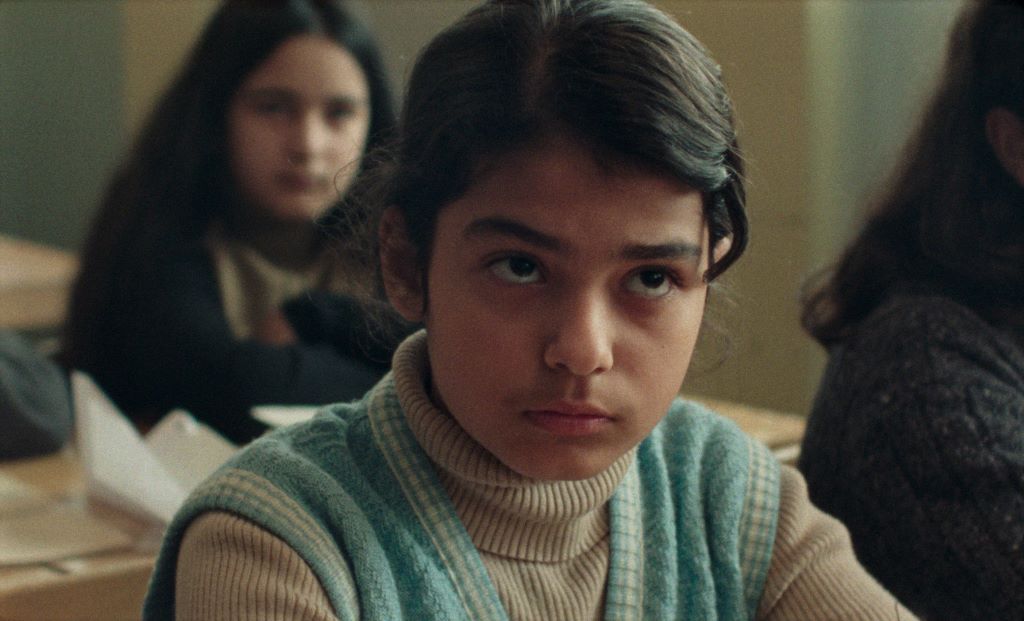
Where did you find your actors? How many kids did you have to see before settling on your leads?
The cast is mainly comprised of our friends. I’m a big believer in the “school play approach” to casting. It’s an ensemble cast and everybody’s welcome – even somebody plays a tree (literally!). Casting was a big part of our writing process, in fact, and we really structured each character around the personality of the friend who would play the part. It’s the best way to work with non-professional actors. Lots of people who aren’t actors by profession are nonetheless very skilled performers – they have a sense of comic timing or an atmosphere about them or some enchanting energy they can just naturally summon. And when you’re attentive to that and set them up for success, they can really shine.
For the kids, we sent out an open call to the Dehkhoda Dictionary Institute, a Farsi-language school in Montréal: No experience necessary, anybody who’s interested in acting in a movie, come meet us! Almost immediately about 30 very precocious children showed up. Our young lead, Rojina Esmaeili (Negin), had never acted before and we really loved her dynamic with Saba Vahedyousefi (Nazgol). Both have very strong personalities and an extremely developed sense of irony and we adjusted the script so they could really express themselves freely while in character. Between takes, Rojina was always asking me very perceptive and extremely exacting questions about the minutiae of film production. It was really a joy to collaborate with both of them.
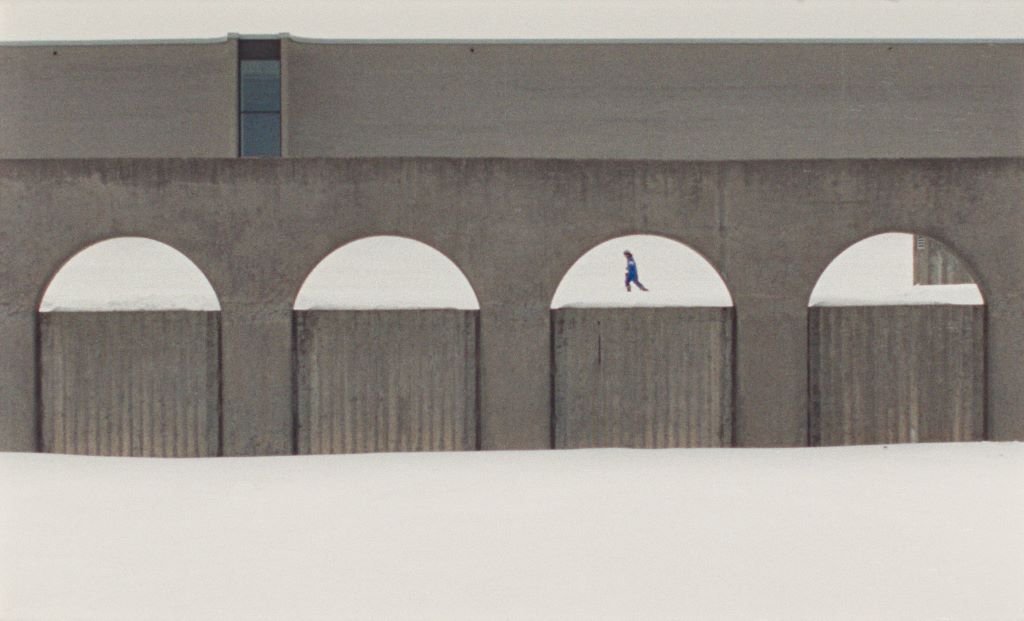
There were a couple of delighted gasps at our TIFF premiere when you opened our Q&A by speaking in Farsi, and I’ll admit I was braced for someone to write an angry review of the film charging you with cultural appropriation. Thankfully, everyone seems to get it … but were you worried about how the film would be received, or if you’d have to prove your bona fides?
Well, I think sincerity is the only real bona fide. As Ila always likes to say when describing the movie to people: هر سخن کز دل برآید لاجرم بر دل نشیند [whatever comes from the heart will surely soothe the heart] – and that is really what we believe.
How could Abbas Kiarostami, for example, make Like Someone in Love (2012), a very personal vision that is entirely in Japanese, a language he was unable to speak? Same question for Wim Wenders directing Perfect Days (2023). Or, to take a very current example, Mohammad Rasoulof making a film about women’s experience in Iran. It all comes down to sincerity. Empathy, in art as in life, can be limited or it can be infinite. We welcome any skepticism somebody might feel going in and it’s very important to always question image-making. But overwhelmingly anyone who has watched our movie can see its pure heart.
To us, it’s a matter of sharing on a very intimate level. Was our movie made by Iranians? Of course. So much Iranian-Canadian talent made this movie, in every creative department and at every phase of production. Was the movie made by francophone Québécois? Yes, exactly the same. Was this movie made by Winnipeggers? Fewer, but also yes. We all learned things and had so much fun. When we premièred the movie in Cannes, nearly our entire crew and cast made the trip because we just love being together inside that brain. It’s very much an expression of our collective joy.
Is this story ours to tell? By any metric, yes. All the events in the story come directly from my own life and the lives of my parents, the city I grew up in. I am sharing with you – over-sharing, in fact, to the point of making myself uncomfortable – the most personal, most vulnerable feelings I have. But I’m not telling that story alone inside a hermetically sealed Tupperware container (where I would atrophy and die). My friends and I are telling that story together and so it becomes ours, collectively. We hope that story will also become yours, but we would never pretend to speak on behalf of anybody but ourselves.
So, the real question you have to ask is this: can you accept a funny, gentle movie about Winnipeg that is in Farsi and in French? Or do you believe those things should be separate? Some people like things to be separate; or even pitted against each other as binary opposites. This is particularly true today. The solitude of the pandemic lockdown did not give way to increased solidarity but has instead metastasized into something utterly pathological. There is a lot in our current politics to encourage mistrust and contempt and many new Berlin Walls are shooting up around us every day. Our movie is working from a position of no binaries, mutual dependence, and the notion that we all belong in this world together. We didn’t set out to make a political statement, but the very gesture of making a kind, tender, transnational movie depicting people being nice to each other is, at this phase of human history, something of a subversive act.
Pirouz showed me a health statistic recently which stated that human beings need a minimum of four hugs per day in order to survive. BASIC HUMAN SURVIVAL depends on HUGS. In other words, if we don’t embrace each other, we will actually die. We really do need each other, in a foundational way. I don’t think humans have survived millennia because of war and resentment and online trolling. I think we are still here because, in spite of everything, we actually do have the capacity to share, to love and listen to each other and have a few laughs. We made our movie in that spirit of sharing and I really think that’s why it has connected with viewers. It’s a catharsis. And we hope our film will inspire longer hugs.
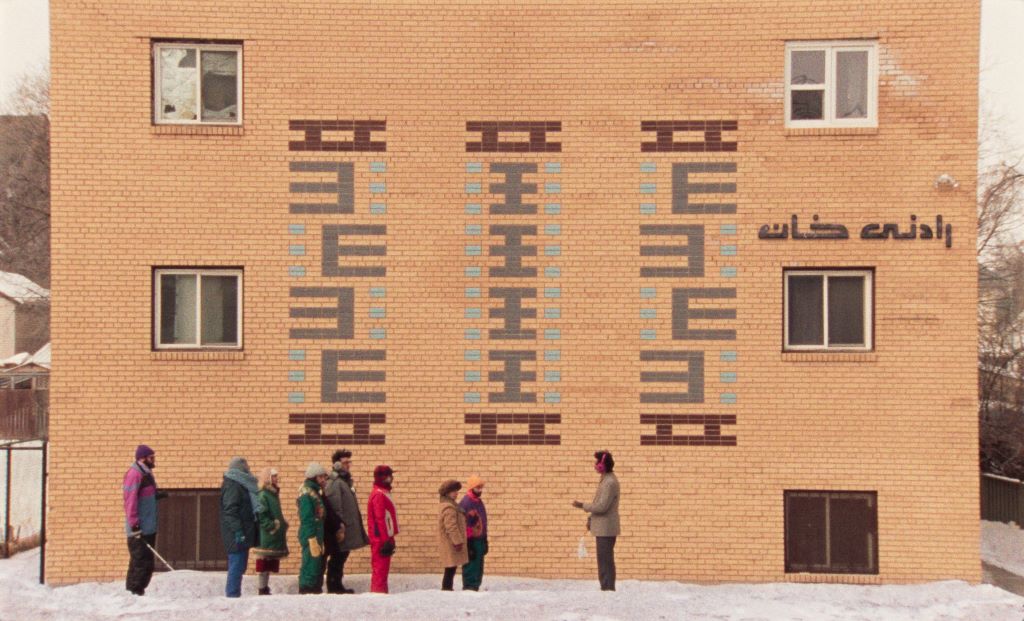
You’ve spent the last few months on the awards circuit, screening the film and going to industry events. What was that experience like? And who’s been your most enthusiastic fan?
I emerged from the sub-human gutter of experimental filmmaking beneath the drainpipes of Winnipeg, so it has been very discombobulating to be assessed on such an enormous level. When we finished the movie, we really loved it. If it only ever played at the Oakville Creativity Festival, that would’ve been perfectly fine by us. But it’s been amazing to watch it go to Cannes, win so many croix-de-guerres across the world and even schlep Canada’s Official Supplication to the Oscar shortlist. You never know how the world will respond.
Denis Villeneuve has been a huge supporter of the movie and extremely generous and nurturing with us. David Lowery put it on his Top Ten List for 2024 and handed Ila and I an enormous prize in Melbourne. After a screening in San Francisco, Ila and I met Ahmad Kiarostami who was beaming with joy. He caught every single invocation of his father’s work and told us it was the freshest movie he had seen in years. So there have been a lot of really sweet encouragements along the way.
But more than anything, it’s been so touching to see audiences connect, especially in the film’s three hometowns. Pirouz and Ila and I showed the movie in Winnipeg in January and it went over like gangbusters. So many Winnipeggers came to us and said that the movie made them feel seen as Winnipeggers and that – and here I remind you the film is principally in Farsi – that it was for them the most authentic depiction of Winnipeg they had ever watched in a movie. Similarly, we showed the film at an underground screening in Tehran in December and the Tehranis said virtually the same thing as the Winnipeggers. They told us that they felt the film belonged to them and that it was made specifically for them – and, of course, these are people who have no clue who Tim Horton is. They told us it filled them with pride to hear non-Iranians speaking in Farsi and to receive this message of love from the other side of the world. So the echo between these two audiences was so moving to us. It’s really next level. It’s low-key world peace, in fact.
Often when you look at the familiar world from an unfamiliar angle you can actually see things more clearly and a new familiarity emerges. There is this line in Parajanov’s The Colour of Pomegranates (1969)which I really love: “We were looking for ourselves in each other.” That’s what it’s all about.
Universal Language is now playing in select theatres.
The winner of the Rogers Best Canadian Film Award will be announced on Feb. 24.
